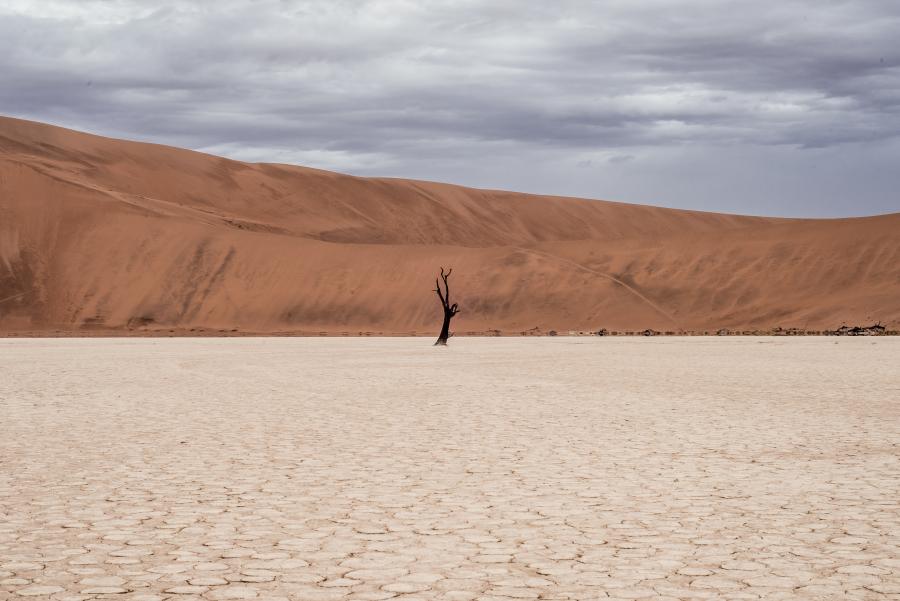This brief explainer article provides an overview of the basic concepts of political ecology:
- The origins of the concept
- Illustrative examples
- Relevant research questions
- Further reading.

In 1985, the Scottish geographer Piers Blaikie published a book on soil erosion that would become a landmark study in the field of political ecology.1 In The Political Economy of Soil Erosion in Developing Countries, Blaike pushed back against the idea that soil erosion was the fault of people who worked with the land.2 In order to understand the reasons for soil erosion, he argued, it was essential to pay attention to broader social, political, and economic factors. In short, Blaikie argued that soil erosion—often seen as an environmental problem—was instead a “‘socio-environmental’ problem,” and to understand it fully, it was necessary to expand the scope of analysis beyond the locations where soil erosion occurred.3
In addition to soil erosion, political ecologists have brought an interconnected perspective to issues such as conservation, parks and protected areas, mining and other extractive industries, food and agriculture, climate development plans, and renewable energy initiatives. While definitions of the field vary, at its core, a political ecology approach signals an attention to power relationships and a rejection of problem definitions that omit socio-political factors.4 A diverse and interdisciplinary field, political ecology includes scholars with training in areas such as human geography, development studies, environmental studies, environmental anthropology, feminist studies, and political science.5 For political ecologists, environmental issues are not separate from the societies and economies in which they occur.6
Research on environmental conflicts and social movements is one example of a strong theme in political ecology.7 As Fabiana Li’s 2015 book Unearthing Conflict: Corporate Mining, Activism, and Expertise in Peru demonstrates, specific conflicts can become a prism for broader socio-environmental concerns. In an ethnographic account of mining protests in Peru, Li writes that “Cerro Quilish, as depicted in anti-mining campaigns, was not just a mountain rich in mineral deposits; it was that, but it was also an aquifer (a store of life-sustaining water) and an Apu (an animate being).”8 Mining debates are about more than minerals—linking water, politics, and spirituality.
Working with Political Ecologists
As glaciers are retreating, wildfires and hurricanes are becoming more destructive, and coastal communities are developing adaptation plans in response to sea level rise, perspectives that acknowledge the complexities of power and causation are relevant in policy efforts, interdisciplinary research, and people’s daily lives. In collaborative settings, those who have an interest in working with political ecologists can be prepared to discuss questions about who defines environmental problems—and how they define them. For example: Who is blamed for environmental harm? Who benefits from environmental initiatives, and who is adversely affected by those initiatives? Whose claims to land and space have been legitimized, and whose presence has been erased?9
To view in your browser and/or download the article, click on the PDF below:
Further Reading on Political Ecology Themes
Feminist Political Ecology:
- Messing with Gender in Feminist Political Ecology
Mollett, Sharlene, and Caroline Faria. “Messing with Gender in Feminist Political Ecology.” Geoforum 45 (March 2013): 116–25. https://doi.org/10.1016/j.geoforum.2012.10.009. - Feminist Political Ecology: Global Issues and Local Experience
Rocheleau, Dianne, Barbara Thomas-Slayter, and Esther Wangari. Feminist Political Ecology: Global Issues and Local Experience. New York: Routledge, 1996. - Women's Scholarship in Political Ecology
West, Paige. “Women’s Scholarship in Political Ecology.” June 21, 2018. https://paige-west.com/2018/06/21/womens-scholarship-in-political-ecology/.
Politics of Conservation:
- The Snow Leopard and the Goat: Politics of Conservation in the Western Himalayas
Hussain, Shafqat. The Snow Leopard and the Goat: Politics of Conservation in the Western Himalayas. Seattle: University of Washington Press, 2020. - Wildlife Protection, Community Participation in Conservation, and (Dis) Empowerment in Southern Tanzania
Noe, Christine, and Richard Y.M. Kangalawe. “Wildlife Protection, Community Participation in Conservation, and (Dis) Empowerment in Southern Tanzania.” Conservation and Society 13, no. 3 (2015): 244–53. https://www.jstor.org/stable/26393203?seq=1. - Coercing Conservation: The Politics of State Resource Control
Peluso, Nancy L. “Coercing Conservation: The Politics of State Resource Control.” Global Environmental Change 3, no. 2 (June 1993): 199–217. https://doi.org/10.1016/0959-3780(93)90006-7.
1Piers Blaikie, The Political Economy of Soil Erosion in Developing Countries (London: Longman, 1985).
2Blaikie, 4.
3Blaikie, 4. While affirming the importance of “place-based” work (Blaikie, 5), Blaikie argued against the assumption that “the causes of the problem of soil erosion lie only in the actual place in which the physical symptoms are felt” (Blaikie, 77).
4 For a brief summary of multiple definitions of political ecology, see: Paul Robbins, Political Ecology: A Critical Introduction (Malden, MA: John Wiley & Sons, 2012), Table 1.1, 15–16. For further overviews, see, for example: Aletta Biersack and James B. Greenberg, eds, Reimagining Political Ecology (Durham: Duke University Press, 2006); and Rod Neumann, Making Political Ecology (New York: Routledge, 2014).
5For a brief video introduction to political ecology, see: Paige West, “Critical Political Ecology,” SESYNC Immersion Program Lecture (March 1, 2016), https://www.sesync.org/events-announcements/thu-2016-02-11-1644/immersion-lecture-critical-political-ecology.
6 Some scholars have asked about the role of “ecology” in political ecology—a question that invites interdisciplinary discussion about what ecology is and who claims it. For further discussion, see, for example: Tor A. Benjaminsen and Hanne Svarstad, “Political Ecology,” in Encyclopedia of Ecology (Second Edition), ed. Brian Fath (Oxford: Elsevier, 2019), 391–96.
7 See, for example: Richard Peet and Michael Watts, eds., Liberation Ecologies: Environment, Development, Social Movements (London: Routledge, 1996); and Fabiana Li, Unearthing Conflict: Corporate Mining, Activism, and Expertise in Peru (Durham, NC: Duke University Press, 2015).
8 Li, 109.
9 See, for example: Dina Gilio-Whitaker, As Long as Grass Grows: The Indigenous Fight for Environmental Justice, from Colonization to Standing Rock (Boston, MA: Beacon Press, 2019).